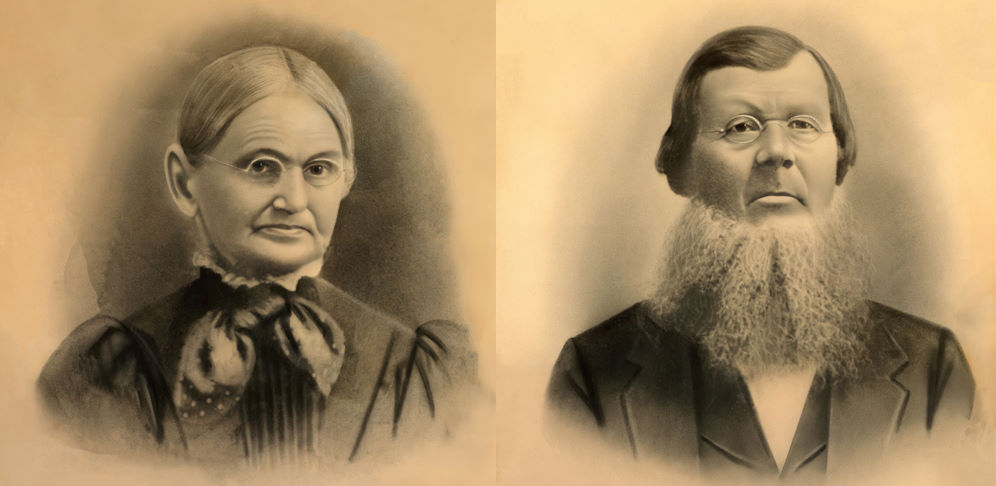
Mahala Powell and Henry Nathaniel Mitchell Rayner explored, adventured, and homesteaded at critical periods in our nation's history. We are honored to have some of their endeavors documented, mostly through letters Henry Nathaniel wrote home to Mahala while he was searching for gold in California. Afterwards he served in the northern army to fight in the Civil War.
Henry N. M. Rayner was born in Ohio in 1827. He farmed in Noble County, Ohio, prior to traveling to the California gold fields in 1852, leaving his wife Mahala at home. His journey west began by passing through Philadelphia and New York City where he boarded a ship bound for the Isthmus of Panama. Rayner eventually prospected in Nevada County, California where he met with uneven success. Returning home sometime after 1854, Rayner next moved his family to Wisconsin where he again engaged in farming. During the 1850s Mahala and Henry had at least one son, Lee (Henry Lee, HL), who eventually married Mary Herron. On August 26, 1864, Henry enlisted in the First Wisconsin Heavy Artillery regiment, Company L, and eventually saw garrison duty in the fortifications surrounding Washington, D.C. He spent most of his enlistment at Fort Willard, Virginia, and was mustered out on June 20, 1865. After he returned home, Rayner received an appointment as Postmaster at Enterprise, Vernon County, Wisconsin and may have engaged in traveling dry goods sales work the following year along the Missouri River to Montana Territory. Rayner eventually settled down to farming at Viroqua, Wisconsin, becoming active in the Masonic Lodge, the Odd Fellows, and the Grand Army of the Republic before his death sometime after 1898. -- Archives West
Fortunately, Henry Nathaniel Mitchell Rayner was a man of letters, as men could proudly be in those days, and documented his fascinating life. Many letters and journals of his time in the Civil War and during the Goldrush survive today, and are chronicled here: Archives West
He kept meticulous notes of his expenses, travels, and weather from an early age. Gradually these notes turned into heartfelt journals chronicling the life of a man who endured massive hardship to find a better life for his family. Throughout it all, the love for his wife Mahala endures. They were married in 1844. HNM Rayner's journals depict a lively exchange on Saturday, September 17, 1859:
In the forenoon was sowing wheat, in the after went to Christopher Hewits in the night before there was a bear came to a straw stack close to the house and catched an old sow and was dragging her off when up jumped Hewit and ran with a club his wife with an axe and made battle after pelting bieren a while with clubs he bethought himself of his gun. Elizabeth ran and got the gun and Martha his clothes and he started for a big stump for to get above bruin where lo the stump proved to be bruin himself in the excitement in cocking the gun or in running through brush he lost the [??] after a while he snapped at him. Henry Clary was going to walk into him with the ax but Hewit advised him not to do it. The bear gave each dog a [??] when they became satisfied with his [??] and I kept at a proper desistance he soon began to make tracks. Hewit stoped to put on his coat and hat Clary start in hot pursuit after he had run a short distance the bear ran close to him he then was to much excited to strike they ran two or three miles and gave up the chase went and staid over night with Isaac Powell. They got word from Wm in the evening cloudy afternoon and looks very much like rain.
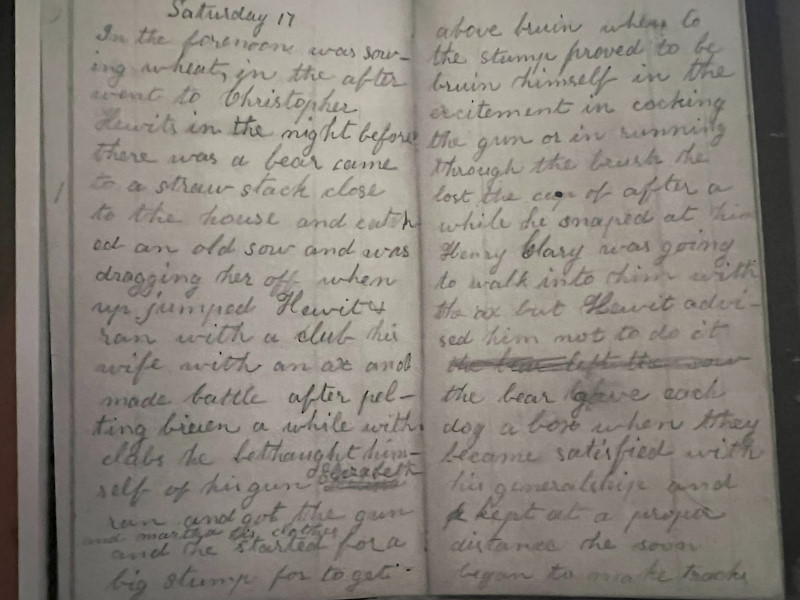 Henry Nathaniel Mitchel Rayner journal entry, September 17, 1859.
Henry Nathaniel Mitchel Rayner journal entry, September 17, 1859.
At some point Mahala and HNM Rayner adopted Rosetta "Rosa" Wade, daughter of Mahala's cousin, Mary Ann Powell and Stacy Wade. Mary Ann died shortly after Rosa's birth - more research is needed to determine the circumstances of the adoption, and the life of Rosa Wade.
Mahala, at the age of 86, homesteaded in what was to be Kingsley, Montana -- proving up and living an active life on the prairie until her death in 1918 in Viroqua, Wisconsin. She moved West with her only surviving child, Henry Lee (HL) Rayner, after being witness to a fascinating time in our nation's history, through her husband Henry Nathaniel Rayner. Their story is best captured by their correspondence and other documents held by Archives West, here.
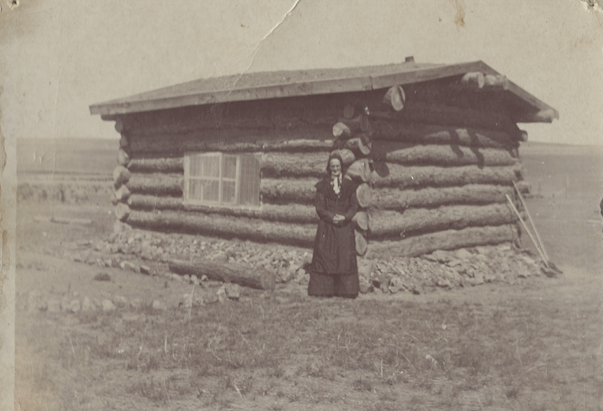 Mahala Powell Rayner in front of her homestead in Custer County (later Powder River County), the dugout of which can still be seen today.
Mahala Powell Rayner in front of her homestead in Custer County (later Powder River County), the dugout of which can still be seen today.
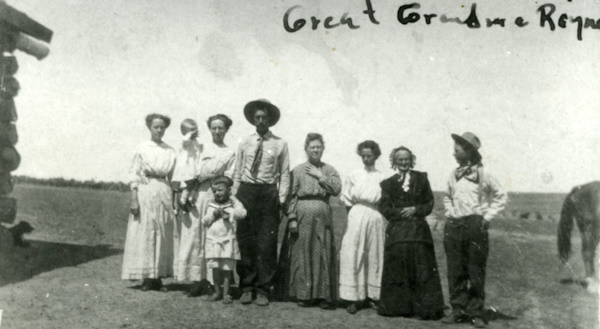 Kate Rayner, Lulu Curry, HL Rayner, Mary Rayner, Mae Rayner, Mahala Rayner, Lee Rayner - est. before 1912?
Kate Rayner, Lulu Curry, HL Rayner, Mary Rayner, Mae Rayner, Mahala Rayner, Lee Rayner - est. before 1912?
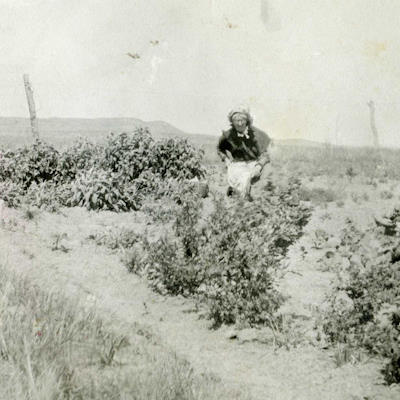 Mahala Powell Rayner working in her Kingsley garden in her 80s.
Mahala Powell Rayner working in her Kingsley garden in her 80s.